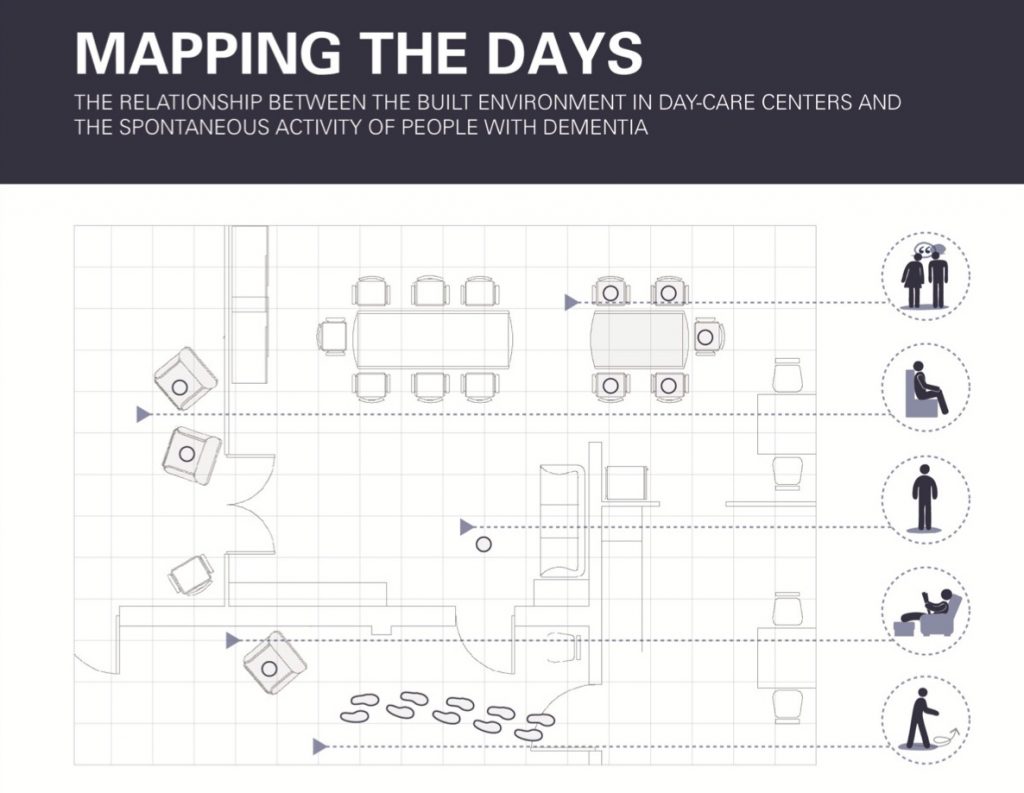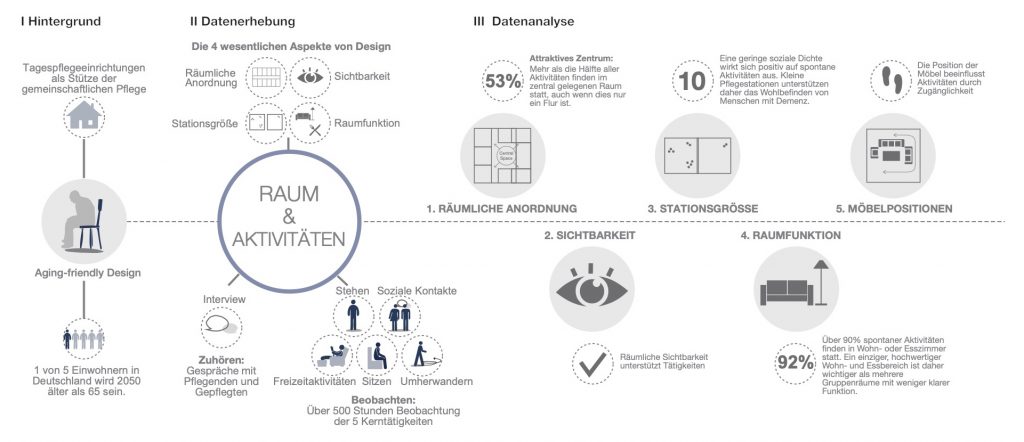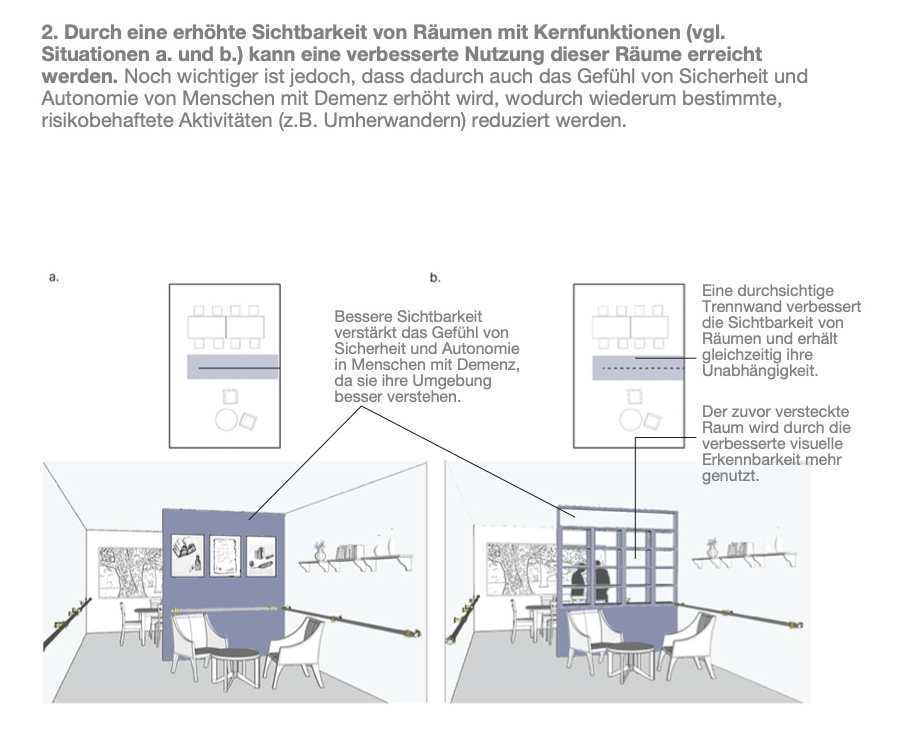
PhD project / Doktorarbeit
Research project / Forschungsprojekt, 2013-2017
Mapping the day – the relationship between the built environment in day-care center and the spontaneous activities of people with dementia
Keywords:
- Adult day-care center, Design recommendations, Behavior Mapping, Space Syntax, Interviews
- Tagespflegeeinrichtungen, spontanen Aktivitäten, Menschen mit Demenz, Behavior Mapping, Space Syntax, Interviews
Link to download the full thesis

Abstract:
(Kurzfassung auf Deutsch s.u.)
This doctoral thesis focuses on the built environment of adult day-care centers (ADCs). It presents a mixed-method empirical research on six German ADCs with the purpose of understanding the relationship between their built environment and the spontaneous activities (SAs) of their care recipients with dementia.
Field observations, Space Syntax analysis and interviews are the methods of the research. They are used to analyze how the distributions and patterns of the SAs of people with dementia are in relation to the building layout, room function, social density, and spatial visibility and accessibility of the ADCs.
The research results suggest that the built environment in ADCs has influence on the distributions of SAs of people with dementia. In terms of building layout, it is revealed that the central space has a gathering effect on the location of SAs. In terms of room function, it is showed that more than 90% of SAs are distributed in the living room, the dining room, and the transition area/corridor. While no correlation is observed between the social density and the SA distribution, significant positive correlations are suggested between the spatial visibility and the SA distribution, as well as the spatial accessibility and the SA distribution. Moreover, furniture location is revealed to have an effect on the SA distribution through influencing the spatial accessibility.
The thesis discusses the research findings in comparison with other previous studies. In addition, practical recommendations for design of ADCs for people with dementia are provided with examples and illustrations.


Kurzfassung:
Der Schwerpunkt des Projektes ist die architektonische Gestaltung von Tagespflegeeinrichtungen für Menschen mit Demenz. Der Zusammenhang zwischen der baulichen Umgebung und den spontanen Aktivitäten der Bewohner mit Demenz ist zentrales Thema der Arbeit.
Als Forschungsprojekt im Gebiet Environmental Behavior Study zielt es darauf ab, Architekten und Wissenschaftler aufzuklären, sowie Design-Empfehlungen zu geben. Es konzentriert sich auf die vier wesentlichen Aspekte des Designprozesses und führt eine datenbasierte quantitative Analyse zu ihnen durch.
Die vier Aspekte beinhalten:
- Räumliche Anordnung – insbesondere Unterschiede zwischen zentralen und flur- orientierten Grundrissen;
- Sichtbarkeit – wie beeinflussen visuelle Verbindungen die Aktivitäten der Bewohner;
- Stationsgröße – um zu untersuchen, wie sich kleine Stationen positiv auf das Wohlbefinden von Menschen mit Demenz auswirken;
- Raumfunktion – Verständnis davon, welcher Teil des Raumprogramms am wichtigsten ist.
Link to download the full thesis
